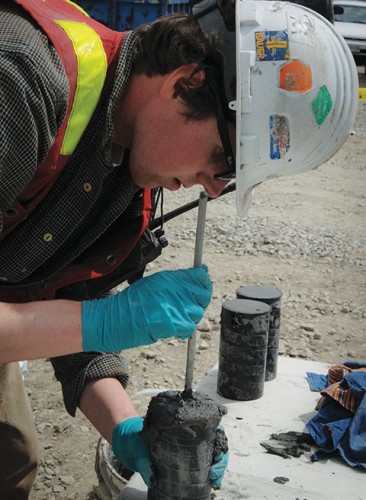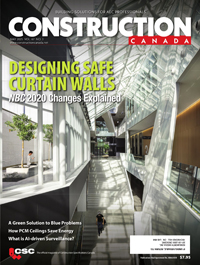Cutter Soil Mixing 101: Addressing settlement risk for underground parking excavation

Success factors in cutter soil mixing
As with any technology, there are factors that help lead a project toward success. Here are some observations, based on the learning from the River Green project.
1. Bring in qualified expertise early in the project lifecycle
As in any project, having qualified expertise available early in the project’s design can help achieve the best outcomes. Innovative approaches to problem-solving using advanced techniques, such as CSM, can be worked into the project plan, design, and budget. Further, regulatory authorities can be consulted early on, and provided with enough information so as to gain approval for the project.
For the River Green project, design/consulting firm Golder Associates’ Construction Division worked with the project designers and owners to optimize the design and take advantage of the benefits of CSM.
The technology allows for customization of the slurry injected at each elevation in the wall. At River Green, this allowed for the installation of a composite wall with a higher-strength upper portion and a lower permeable bottom portion. The upper 13 m (43 ft), which functioned as a shoring wall, were constructed using soil-cement panel with target strength of 4 MPa while the lower 15-m (49-ft) portion, which functioned as a cut-off wall, had a lesser strength requirement of 0.5 MPa. Significant savings were achieved in material and mixing costs because of the ability for the CSM to install panels with varying strength profiles across the depth of a panel.

2. Monitor groundwater in order to warn of problems and demonstrate compliance
Although the application of CSM for this project was proven to minimize drawdown of the groundwater around the excavation, it is still essential to continuously monitor the groundwater levels around the construction site and at the neighbouring buildings while dewatering continues.
At the Richmond Olympic Oval, a drop in groundwater level was observed following the completion of the excavation at the River Green site, and engineering staff from the City of Richmond were justifiably concerned. These observations were initially very puzzling to the engineering team as it was evident from the dewatering that very little water was being pumped from the River Green excavation.
Further investigation found the dropping water table was not due to work at River Green, but at another building excavation in progress some distance away, which was being built with conventional sheet piles and evacuation wells. This is clear testament of the need to manage drawdown in the coarse sands and the effectiveness of a cut-off wall to reduce dewatering effects for future developments in the area.
Conclusion
Today, the use of cutter soil mixing is growing in both Canada and the United States—it will continue to see wide applications in the future, for cutoff walls particularly in difficult soils, or where there is need to support a building in other types of challenging soil conditions.
 David Siddle, M.Eng., is a project manager in Golder Associates’ Construction Division and focuses on cutter soil mixing and other ground improvement projects. He can be contacted via e-mail at david_siddle@golder.com.
David Siddle, M.Eng., is a project manager in Golder Associates’ Construction Division and focuses on cutter soil mixing and other ground improvement projects. He can be contacted via e-mail at david_siddle@golder.com.
 John Scholte, M.E. Sc., P.Eng., is a geotechnical engineer and a principal in Golder’s Construction Division, based in Vancouver. He specializes in civil-geotechnical construction and design-build projects that involve ground improvement, slope stabilization, cut-off walls, and large-scale slope depressurization/dewatering. Scholte’s experience with cutter soil mixing extends back to the first application of CSM in North America as part of the foundations for the Nanaimo (B.C.) Conference Centre in 2006. He can be reached at john_scholte@golder.com.
John Scholte, M.E. Sc., P.Eng., is a geotechnical engineer and a principal in Golder’s Construction Division, based in Vancouver. He specializes in civil-geotechnical construction and design-build projects that involve ground improvement, slope stabilization, cut-off walls, and large-scale slope depressurization/dewatering. Scholte’s experience with cutter soil mixing extends back to the first application of CSM in North America as part of the foundations for the Nanaimo (B.C.) Conference Centre in 2006. He can be reached at john_scholte@golder.com.







